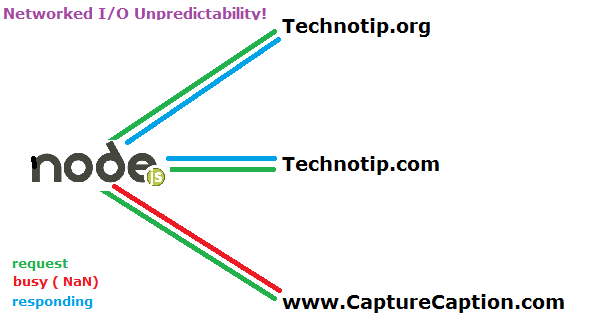This video tutorial illustrates searching, installing, updating and removing the external, free modules.
External Free Node Modules are listed at npmjs.org and is managed by NPM – Node Package Manager.
There are so many amazing modules already written to handle so many sophisticated functionalities, that it becomes easy to use them in our application and build a robust, scalable application quickly.
Command to look at all the external module names and their respective description
It gives a long list of names and descriptions.
To make is look better, you can use GREP(if you’re on Linux or Unix based System)
Search with GREP
1
| npm search | grep module_name |
npm search | grep module_name
npm search followed by pipe symbol, which is followed by any module name.
For Windows users
it gives all the details of available methods, properties and their description.
Installation of Modules
init command
Once you run this command, it prompts you with some optional things, like, name of the project, version, author, licensing etc. Once you’re done with that, it creates package.json file with all the details you provided.
The ‘init’ command in NPM allows us to identify our project and list out any Node Modules it requires.
Now open that package.json file: it looks somewhat like this
package.json file
1
2
3
4
5
6
7
8
9
10
11
12
| {
"name": "app",
"version": "0.0.0",
"description": "authentication application",
"main": "index.js",
"scripts": {
"test": "echo \"Error: no test specified\" && exit 1"
},
"repository": "",
"author": "SATISH B",
"license": "BSD"
} |
{ "name": "app", "version": "0.0.0", "description": "authentication application", "main": "index.js", "scripts": { "test": "echo \"Error: no test specified\" && exit 1" }, "repository": "", "author": "SATISH B", "license": "BSD"
}
You need to open this package.json file using a plain text editor and add your project dependencies i.e., some of the modules you need to install for your project.
In this video tutorial we’re installing 3 external modules:
express
jade
mongoose
package.json file, after editing
1
2
3
4
5
6
7
8
9
10
11
12
13
| {
"name": "app",
"version": "0.0.0",
"description": "authentication application",
"main": "index.js",
"scripts": {
"test": "echo \"Error: no test specified\" && exit 1"
},
"dependencies": { "express": "2.5.8", "jade": "0.26.1", "mongoose": "2.6.5" },
"repository": "",
"author": "SATISH B",
"license": "BSD"
} |
{ "name": "app", "version": "0.0.0", "description": "authentication application", "main": "index.js", "scripts": { "test": "echo \"Error: no test specified\" && exit 1" }, "dependencies": { "express": "2.5.8", "jade": "0.26.1", "mongoose": "2.6.5" }, "repository": "", "author": "SATISH B", "license": "BSD"
}
Now you’ve specified all the external modules your project depends on.
Now using install command, we need to install these modules.
installation command
Once this command is executed, it looks through the package.json file and installs all the dependency modules one by one.
External Module Install, Update, Remove via NPM: Node.js
[youtube https://www.youtube.com/watch?v=HRISSD0ic2s]
What is a module?
A module is a self-contained series of one or more javascript files represented by an object.
Update Command
once you run this command, package.json file is parsed and the dependency modules are checked for any updates, if any, it’ll be updated.
If any module is installed with -g (global scope), i.e., the root installation, then while updating or removing them, it may throw some errors, in such case, use sudo keyword:
Update Command
This would solve the problem both for updating and deleting external modules.
remove/delete module command
To remove the unused modules: open package.json file and remove the module names which you want to remove. Save the package.json file and then run above(npm prune) command. This would safely remove the modules you no more intend to use in your project.
List Global module: using command
This lists all the global modules, it’s path and file structure: as shown below:
Example output
Removing/Uninstalling Global modules: using command
This removes all the global modules installed.
Clear cache
After modifiying things from command prompt, if it’s still not working, try clearing the cache.
Note:
To install latest version of the module: you’ll need to write * (asterisk or star) in the place of version number inside package.json file.


